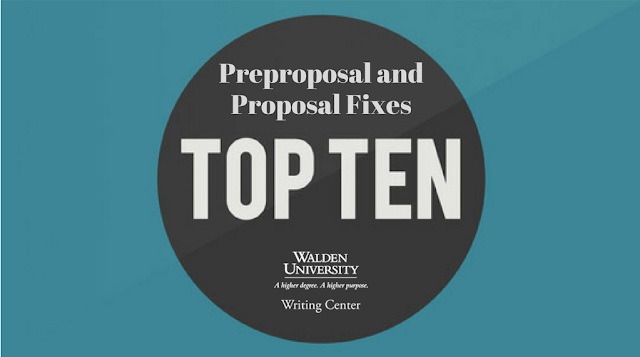September Webinar Preview
September feels like back to school season! Join us for one of our many live, interactive Writing Center webinars in September to learn more about academic writing and APA Style.Webinar Calendar
| Title: | APA Formatting & Style: Beyond Citing Sources |
| Date: | Thursday, September 6, 2018 |
| Time (Eastern): | 7:00PM - 8:00PM |
| Audience: | All Students |
| Title: | Writing and Responding to Discussion Posts |
| Date: | Monday, September 10, 2018 |
| Time (Eastern): | 1:00PM - 2:00PM |
| Audience: | All Students |
| Title: | Demonstrating Critical Thinking in Writing Assignments |
| Date: | Thursday, September 13, 2018 |
| Time (Eastern): | 8:00PM - 9:00PM |
| Audience: | All Students |
| Title: | Master's Students: Revising and Proofreading Your Coursework Documents |
| Date: | Tuesday, September 18, 2018 |
| Time (Eastern): | 11:30AM - 12:30PM |
| Audience: | Masters Students |
| Title: | Top APA Mistakes and How to Fix Them |
| Date: | Wednesday, September 19, 2018 |
| Time (Eastern): | 10:30AM - 11:30AM |
| Audience: | Masters Students |
| Title: | Writing at the Graduate Level |
| Date: | Wednesday, September 26, 2018 |
| Time (Eastern): | 6:00PM - 7:00PM |
| Audience: | All Students |
Can't make it to one of our live webinars? No worries! We record all of our webinars and publish them in our webinar archive for you to view at your convenience.

The Walden University Writing Center produces a live webinar each and every week. Walden University students are encouraged to participate and practice their scholarly writing skills with one of our instructors or editors.
.png)
Never miss a new post; Opt-out at any time
Handling the Hot Thoughts: Cognitive Behavioral Therapy and Writing
Although I am a professional writer and educator, writing
does not always come easy for me. When I am facing a bad case of writer’s block,
I rely on a psychotherapy technique I learned from a therapist: cognitive
behavioral therapy.
Cognitive behavioral therapy (CBT) is a form of psychotherapy
developed by Dr. Aaron Beck in the 1960’s (Greenberger & Padesky, 1995).
This therapy treats stress, depression, and anxiety by helping a person to
identify and challenge their negative thoughts (Greenberger & Padesky,
1995). With practice, CBT can help a person to automatically identify negative
thinking and turn thoughts from negative to positive.
Note: This blog provides just a summary of CBT, but you can
find more information on the topic from Greenberger and Padesky’s book Mind Over Mood (1995). Before I jump into using CBT for writing anxiety, please know
I am not trained in any kind of therapy or mental health care. These are just
tips I have found to be helpful when I’m battling my own writing anxieties.
Step 1: Identify your situation and mood (Greenberger &
Padesky, 1995)
The first step in using CBT for writing is to identify the
situation and how you are feeling (Greenberger & Padesky, 1995). For
example: Last week I was struggling to write a work assignment that asked for
my personal opinion. In this example, the situation was a work assignment, and
I felt nervous and insecure about providing my personal opinion. Because of
these feelings, I found myself procrastinating on the assignment.
Other examples of situation and mood may include:
- You’re writing a major assessment for a course and you have no idea where to start. You pored over research, but you are putting off writing because you feel overwhelmed.
- You’re almost done with an annotated bibliography. The annotations and entries are done, but now you are stuck on the introduction. You’re feeling anxious about finishing this assignment because it is worth such a large percentage of your course grade.
Step 2: Identify your automatic thoughts and the hot thought
(Greenberger & Padesky, 1995)
As you are identifying your situation and mood, where do you
find your thoughts going? For my work assignment, my automatic thoughts
included: “I will have to turn this assignment in late. My coworkers will be
upset with me. Everyone will think I am terrible at my job.” Yikes! My thoughts
went to a pretty extreme place. In my automatic thoughts, “Everyone will think
I am terrible at my job” is definitely the hottest or scariest thought.
Using the same situations and moods as above, here are some
examples of automatic and hot thoughts:
- “I have no idea how to start this paper, because I am not good at writing. Hot thought: Whatever I turn in will be terrible.”
- “I have no idea what to write for this introduction. What if I finish this assignment and I get a terrible grade? Hot thought: If I get a terrible grade, my overall course grade will drop.”
Step 3: Identify evidence that does not support the hot
thought, and instead, develop an alternative thought (Greenberger &
Padesky, 1995)
I could have let my automatic thoughts continue to spiral,
but I was able to stop and counter my negative thinking by looking for evidence
to support my hot thought. Did I have any proof that my coworkers thought I was
terrible? My coworkers had always been very supportive of my work. They had given
me praise and encouragement on many projects. There was no evidence to support
my hot thought. I had never turned in an assignment late before, and I knew I
could still make the deadline because I had performed this kind of task in the
past! My alternative thought or my positive, rational idea was, “I might have
to ask for an extension, but I have to try first.”
Here are some examples of looking for evidence that does not
support hot thoughts and alternative thoughts:
- I have never turned in a terrible paper before. While I may have done poorly on some writing assignments in the past, I was able to revise my writing and learn from the experience. Alternative Thought: I am confident in all the research I have done. I can freewrite my first draft and then get help from the Writing Center.
- So far I have not received a bad grade in this class. In fact, my instructor has been happy with my writing. Alternative thought: I may be stuck now, but I will begin by outlining my introduction. If I am still struggling with writer’s block, I will reach out to my instructor for feedback.
Ultimately, CBT is about addressing the negative thoughts
that hold us back, and turning them into positive thoughts that move us
forward. By working through this process, we have to slow down and rationalize
our worst fears. More often than not, these fears are unfounded. With time and
practice, applying CBT to your writing anxieties may happen automatically.
Reference
Greenberger, D., & Padesky, C. A. (1995). Mind over
mood. New York, NY: The Guilford Press.
Tasha Sookochoff is a writing instructor in the Walden University Writing Center. Along with earning degrees from the University of Wisconsin, Stout and Depaul University, Tasha has written documentation for the U.S. House of Representatives that increases government transparency, blogged for DePaul University, copy-edited the Journal of Second Language Writing, tutored immigrants and refugees at literacy centers, and taught academic writing to college students.
.png)
Never miss a new post; Opt-out at any time
Thursday Thoughts: Restorative Writing for Social Change
Social change is one focus that sets Walden University apart. Here in the Writing Center, we're excited to support writers as they work towards social change by offering several resources related to the topic.We are excited to add a new webinar to our webinar archive. Using Restorative Writing to Enact Social Change explores how you can use writing to work through difficult experiences and events and move towards social change in your community. In this hour long webinar that you can watch at any time, you will learn what restorative writing is and be able to practice it with several guided writing exercises.
Check out these other great resources related to restorative writing for social change:
- WriteCast Episode 36: Social Change and Difficult Conversations is a podcast episode devoted to handling difficult conversations related to change
- In the blog post How to Write for Positive Social Change, Dissertation Editor Lydia talks through how to explain the social change implications of your academic work at Walden
- Exploring Perspectives is another webinar focused on writing for social change
- The Academic Skills Center has a Creative Writing for Social Change webinar in their archive and is also hosting a virtual conference on Using Your Skills for Social Change on October 4, 2018
- For more on the importance of social change here at Walden, see the Social Change at Walden web page
The Walden University Writing Center helps student writers at all points of the writing process by providing one on one writing instruction, modules, webinars, a podcast, and blog.
.png)
Never miss a new post; Opt-out at any time
Top 10 Preproposal and Proposal Fixes for Capstone Writers: Part II
Last week, we began our presentation on top fixes for those working on capstone projects here at Walden University. We made recommendations to writers about streamlining language use to capture an effective scholarly voice. Today, we are pleased to present the rest of our suggestions that cover topics like how to consider your reader as you write and how to review APA errors as you revise. The strategies we present today come from years of working with Walden capstone writers in the preproposal and proposal stages of their programs. We're happy to share what we've learned with you today!Fixes 4-6: Keeping Your Reader In Mind
4. Try to avoid ending sections with a citation (unless
explicitly required by your program). Instead focus on your project. Claire
often notes that in preproposal documents the significance or other sections
end with a piece of evidence. However, since the purpose of your work should be
unique (no one else has done this particular study before), inclusion of a
citation at the end of a section gives me as a reader the wrong emphasis. For
clarity and flow, I always recommend trying to refocus readers on your project
at the end of sections where possible.
5. Students writing a doctoral study or dissertation should make
sure that key terms are defined appropriately and helpfully. Readers (and you!)
need to be clear about the operational and conceptual definitions used in your
document. When composing and revising this section of your study, first ask
yourself whether the list includes all of the terms a reader needs to understand
to follow your argument. Then, scrutinize the definitions to make sure that
they are succinct and sufficiently descriptive and that they provide readers
with clear definitions of terms as they are used in your study. Support your
definitions with appropriate citations. Remember to arrange definitions in
ascending alphabetical order (A, B, C, D, etc.) and indent them like
paragraphs. In addition, definitional terms should be italicized and in
sentence case and followed by a nonitalicized colon.
6. Be sure to follow APA guidelines for abbreviations. This fix
relates to keeping your reader in mind because abbreviations are meant to help
out your reader—you want to abbreviate terms you’ll be using over and over and
find a helpful and clear abbreviation to use to assist readers. You want to be
consistent and to follow APA style specifications. Sometimes, inclusion of
abbreviations can be distracting and unhelpful to readers, particularly if many
abbreviations are used within a sentence or paragraph. Readers are also
distracted by the inconsistent use of abbreviations in a text (e.g., an
abbreviation is introduced, but the full term is used in subsequent sentences). See
also: our webpage on APA abbreviations.
Fixes 7-10: Review APA Errors as You Revise
7. Ensure that “References” at the beginning of your reference
section is centered, flush left, but not bold. Per APA, References is treated
as a title rather than a heading for formatting. See APA, p. 62, for a helpful
overview of how to format headings in APA. For doctoral capstone writers, the Form and Style Review Checklist also includes a quick and easy-to-grasp overview of
headings.
8. Don’t list the
library or a database as your source URL. A reader who isn’t a Walden student
or who does not have access to a certain database can’t use a database URL.
Instead, first search for the doi number. If there is no doi number, then type the name of the
journal/source into Google. Find that source’s Internet homepage and copy and
paste the homepage link after “retrieved from” in your reference (be sure to
undo the automatic hyperlink).
9. Make sure your
reference list and sources in your document match. You’ll work on these
documents over a long period of time, so having some sources that are cut or
never used is understandable! But not having a reference entry for a source a
reader wants to look up, or listing a source you never reference, is confusing
to the reader, so be sure to double check.
10. Check that you’ve
used & and “and” correctly in your citations. If a citation is in
parentheses (or in your reference list), always use “&”—think of it as a
shorthand. If you’ve referenced the authors as part of the meaning of the
sentence, spell out “and” as this is part of your larger text. See also: additional citation resources.
We are confident that making the fixes we’ve
identified will strengthen your doctoral study and make your experience more
enjoyable. The preproposal stage is a great time to start using this list. In
the comments box, be sure to share whether you have your own list of easy fixes
for capstone proofreading and revising.
Claire Helakoski is a Writing Instructor and Tara Kachgal is a Dissertation Editor in the Walden University Writing Center. Both are dedicated to supporting writers as the begin, progress, and complete their capstone projects.
.png)
Never miss a new post; Opt-out at any time
Meet the Walden University Writing Center's Plagiarism Prevention Kit
Academic writers have a lot of style considerations to
acclimate to. What does an academic voice sound like? What information appears
inside the citation? When do I use the ampersand sign vs. the word “and?” What
is anthropomorphism again? In addition to that, academic writers have to ensure
that they have focused on a strong central idea, have developed it in organized
paragraphs, and have remained rooted in research. With all of these things
going on, academic writers also have to ensure they avoid plagiarism.
Plagiarism is defined as using, or presenting, someone’s
ideas or work as your own. However, there are a variety of things that actually
are considered plagiarism. Actions that can constitute plagiarism range from
submitting someone’s writing as your own to misplacing a citation. Because writers
start their academic careers with different experiences and understandings, we
created a Plagiarism Prevention Kit to house information students can sort
through to find a specific answer regarding how to prevent plagiarism or to learn
more about the topic in general.
The Walden Writer Center’s Plagiarism Prevention Kit is a
resource full of materials, tools, and tips to help you avoid plagiarism in
your writing. All of the materials can be found in the menu on the left-hand
side of the page, but highlights include:

.png)
Never miss a new post; Opt-out at any time
Top 10 Preproposal and Proposal Fixes for Capstone Writers
Today we’ll be presenting some easy fixes and things to
revise in your preproposal documents to help prepare your work for submission
and, later, to transition to your doctoral documents. Both Claire as a Writing
Instructor and Tara as a Dissertation Editor will be weighing in today with our
ideas about doing some up-front work to help enhance your documents as you
prepare for your capstone, which at Walden University is a term we use to describe the
premise, prospectus, proposal, and dissertation. Note that we will not be
discussing content today, as this is particular to your discipline and project.
Instead, we’ll go through 10 tips to streamline wording, keep your reader in
mind, and review APA errors as you revise.
These easy fixes we’ve identified below fit with
proofreading and revising strategies for the capstone. Based on our experience, these are the some of
the most important, but often overlooked, things that preproposal and proposal
writers can do to make their capstone writing experience as seamless as
possible.
We have arranged the fixes into three main categories:
Streamlining your wording, keeping the reader in mind, and reviewing for APA
errors. These categories were collaboratively created by us after some
discussion of what we most often see both in the Writing Center’s myPASS
preproposal schedule and in the form and style review process. We found that
our top quick fixes all fit into these categories, so if you are in the
preproposal stage start now! If you are already in your capstone work, these
are still useful as you revise prior to submitting at any point in your
process.
Fixes 1-3: Streamlining Your Wording
1. Work to have clear
citations with “I” statements. We often see phrasing like: I will use
qualitative methodology (Barnes, 2018). Since
Barnes didn’t write about your choice--the researcher wrote about the
methodology itself--readers will likely be confused about why a citation is
being included in the sentence. Only
include citations when you have summarized, paraphrased, or quoted from source
materials. A more expansive explanation
of evidence or narrative citation can help clarify things. See also: Creswell Did Not Write About You blog post
2. Be consistent with
your use of verb tenses, and make sure that they reflect the current status of
your research. In the preproposal stages, that means you will likely write in
the future tense “I will interview”. On the Writing Center instructor side of
things, Claire often sees confusing language here in the past tense when at the
preproposal stage, your study hasn’t been approved yet so everything is
hypothetical at that point. In the preproposal stage, make sure it is clear
that you have not yet completed the study itself.
Another important note from Tara is that you will have to
revise your verb tenses as you complete your study (e.g., change future tense
in the proposal to past tense in the final capstone study to reflect the fact
that you have completed your study). Just because you get that initial approval
doesn’t mean you should be done revising or ensuring your work is clear and
correct.
Join us next week as we continue our post and give you the final seven fixes for capstone writers. We'll cover topics like how to keep your reader in mind and how to check your writing for adherence to APA style. Happy writing, Walden writers!


Claire Helakoski is a Writing Instructor and Tara Kachgal is a Dissertation Editor in the Walden University Writing Center. Both are dedicated to supporting writers as the begin, progress, and complete their capstone projects.
.png)
Never miss a new post; Opt-out at any time
APA Style Refresh: Using Multiple Sources with the Same Author and No Date
As you read our APA Style Refresh series, you’ll start to wonder (if you haven’t already) how in the world anyone remembers all of these rules. The dirty little secret? We don’t! Even Writing Instructors, who help students with APA Style every day, have to look up the finer points of APA with some regularity.One rule that I’ve had to look up more than once is what to do when you have multiple sources that have the same author and no date. The answer comes out of the rule for referencing multiple sources with the same author and year of publication. In that case, lowercase letters are placed immediately after the year and within the parentheses in both citations and reference entries: (2018a), (2018b), (2018c), etc.
If multiple sources have the same author and no date available, the formatting is just a little different. In this case, follow “n.d.” for “no date” with a hyphen and lowercase letter.
Here are the example references entries for these types of sources:
Walden University. (n.d.-a). Citations: Citation variations. Retrieved from https://academicguides.waldenu.edu/writingcenter/apa/citations/variations
Walden University. (n.d.-b). Reference list: Common reference list examples. Retrieved from https://academicguides.waldenu.edu/writingcenter/apa/references/examples
How do you choose which source is letter “a” and which source is letter “b”? Simply place the sources in alphabetical order by title, disregarding any initial articles like “A,” “An,” or “The.”
Be sure to use these letters in not only the reference entries, but also the citations so that your reader knows where to find each piece of information.
I have to say, I’m glad that this blog post is now published so I can go back to it the next time I forget this rule—which I surely will! What new APA rules have you learned lately?
Subscribe to:
Posts
(
Atom
)













No comments :
Post a Comment